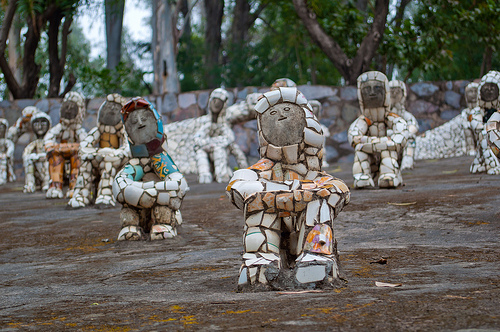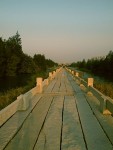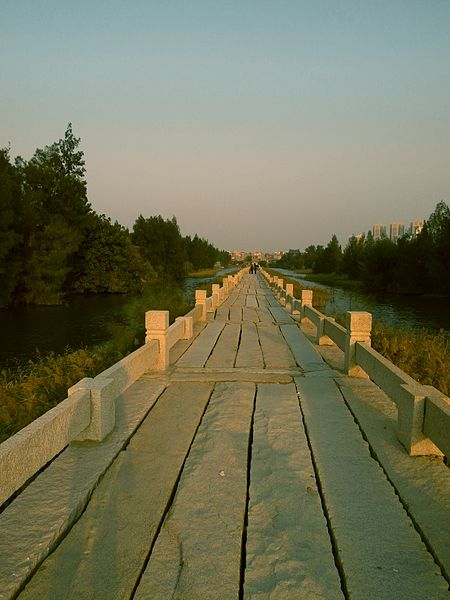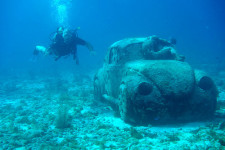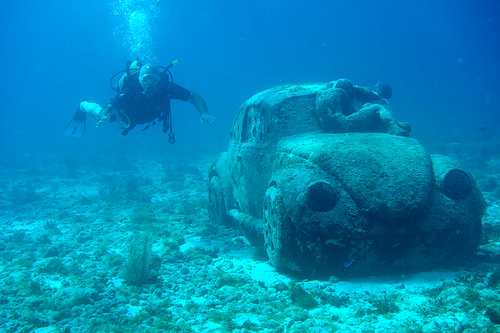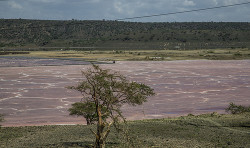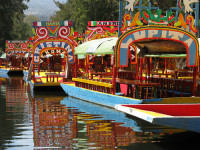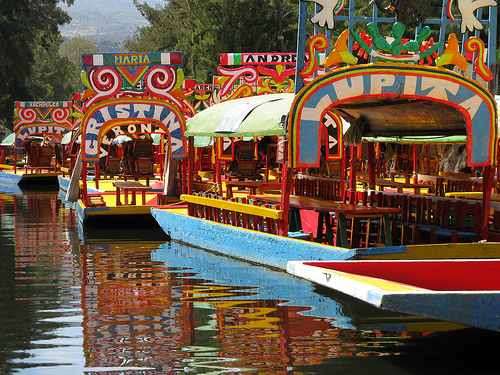
The Rock Garden of Chandigarh gives ‘garden’ a whole new meaning!
- The Rock Garden of Chandigarh is located in the city of Chandigarh in northern India, and it is a recreational area full of sculptures.
- The ‘Rock Garden of Chandigarh’ is also known as ‘Nek Chand’s Rock Garden’ and ‘Chandigarh Rock Garden’.
- The creation of the Rock Garden of Chandigarh began as a hobby in the late 1950s by Nek Chand, an Indian government road and transport employee at the time, illegally, on government land.
- The Rock Garden of Chandigarh covers an area of roughly 10.1 hectares (25 acres), while a similar, though much smaller garden made by Nek Chand, can be found in Kerala, in southern India.
- The initially illegal and secret Rock Garden of Chandigarh was first discovered in 1975 by government authorities, however the garden was not destroyed as expected, due to numerous protests from the public.
Sculpture of the Rock Garden of Chandigarh
Image courtesy of Rishabh Mathur/Flickr
- All sculptures of the Rock Garden of Chandigarh are mostly made from recycled materials, that were typically discarded, or salvaged from buildings that were being knocked down.
- The Rock Garden of Chandigarh was officially recognised by the government in 1976, despite its illegal origins, and funds were provided by the city so that the project could grow to a larger scale, with a team of 50 workers, and Nek Chand as director.
- Thousands of people visit the Rock Garden of Chandigarh every day, and an entrance fee is payable to view the garden.
- Rock Garden of Chandigarh was subject to vandalism in 1996 to 1997, when government funds, and therefore workers, were withdrawn, while the garden’s creator, Nek Chand, was visiting the USA.
- Man-made waterfalls, over 2000 sculptures, and numerous rock formations populate the Rock Garden of Chandigarh, to create a fictional kingdom.
Bibliography:
Maizels J, Nek Chand Obituary, 2015, The Guardian, http://www.theguardian.com/artanddesign/2015/jun/15/nek-chand
Rock Garden, 2006, Chandigarh Tourism, http://chandigarhtourism.gov.in/Chandigarh%20Tourism%20-%20places%20to%20see-rock_garden.htm
Rock Garden of Chandigarh, 2016, Wikipedia, https://en.wikipedia.org/wiki/Rock_Garden_of_Chandigarh
http://nekchand.com/about-foundation






